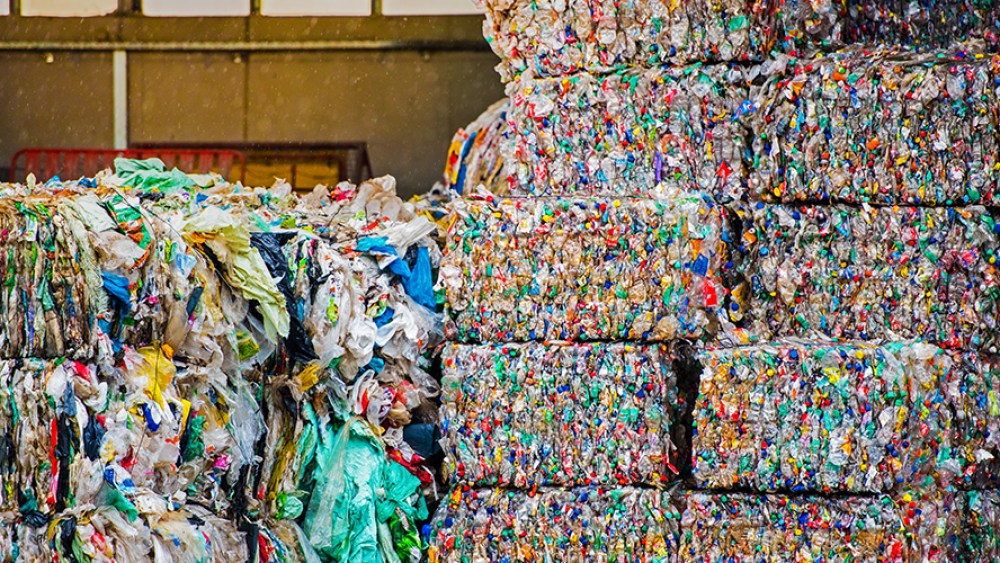Industry Issues: Going green
27 Sep 2018

Our previous Industry Issues article discussed the impact direct mail was having on the environment and touched upon new alternatives to traditional plastics. This issue has been attracting plenty of attention in the press and concern amongst consumers too.
The DMA continues to invest time and resources into promoting discussion around what we as an organisation, as well as the wider marketing industry, can do to reduce our plastics consumption and research into what eco-friendly alternatives are out there.
My colleagues have founded the DMA’s Sustainability Committee that will encourage more eco-friendly practices across the DMA Group – their progress will likely be published on our website in the coming months.
Additionally, I recently attended the Professional Publishers Association sustainability action group and plastics expert, Graham Whitchurch, from Solutions 4 Plastic presented to us.
You won’t be surprised to learn that there are a plethora of different products available on the market, which makes it hard for organisations and their marketing teams to navigate.
Graham did a fine job explaining the different kinds of plastic available on the market and what is really preventing the wholesale take-up of bioplastics.
Hopefully, I’m able to do a similar job here and highlight some of the key discussion points.
Traditional plastics – the unsustainable choice
Traditional plastics are commonly used by many businesses and these plastics are made from oil-based products. These products will degrade in a landfill but it will take hundreds of years and for some products even a thousand years. However, landfill should be inert, nothing should degrade (or biodegrade) in it but this is difficult to achieve.
Graham pointed out that: “Plastics won’t degrade that much and there are even plans to ‘mine’ old landfills and remove the plastic so that it can be turned into a type of diesel by pyrolysis!”
This poses severe environmental problems and means that the plastic is wasted once it has been thrown away. Not to mention the damage it does to the ecosystem by the accumulation of trash and plastics in our oceans. Marine debris ingestion and entanglement directly impact marine life.
Bioplastics
Bioplastics are plastics that are made from renewable resources, for example, from vegetables or starch. The term also encompasses any other plastic that is biodegradable, which in some cases might be oil-based as around 25-30% of all bioplastics are oil based.
Graham pointed out during the meeting that all plastics are biodegradable given enough time so the term can be confusing for the general public. It doesn’t necessarily mean the plastic is better for the environment.
Compostable is a better definition to use as this means that the plastic will biodegrade in a specified time without any harm to the environment. Some compostable plastics will biodegrade harmlessly in a marine environment and others will biodegrade in your compost heap at home. Additionally, as some or all of the bioplastic is produced using natural, renewable resource materials then there is a lower impact on global warming and climate change due to the lower carbon dioxide emissions.
How to dispose of bioplastics?
If bioplastics end up in a landfill site then they can biodegrade and release methane and carbon dioxide gas into the atmosphere, both of which are greenhouse gases. In 2011, the waste sector accounted for 3.1% of total greenhouse gas emissions. A landfill is the worst place that a bioplastic can go!
In many cases, bioplastics are compostable and this means they biodegrade during the composting process through the action of naturally occurring micro-organisms. This results in no toxic residue or after-effects as is often the case with traditional plastics.
However, you can’t automatically assume that all bioplastics are compostable. Bio only refers to the materials used to make the plastic or how it can disposed of.
In other cases, some non-compostable bioplastics can be recycled along with traditional plastics. For example, polythene made from sugar cane rather than oil can be recycled with oil based polythene.
As you can see, there are no easy answers!
Why haven’t bioplastics been widely adopted?
One word, price. The cost of traditional plastics per tonne is a lot less than for most bioplastics. Graham explained that businesses started looking into bioplastics with great interest while oil prices were very high as this had a knock effect on the price of traditional plastics. However, since then, the price of oil has dropped significantly. More research is needed in this area as the current cost of bioplastics is proving to be a significant barrier, preventing many businesses from using them.
How do other countries dispose of plastic?
Much of the UK’s plastic, even bioplastic, will end up in a landfill site where it generates greenhouse gases and has a negative effect on the environment. Other countries have taken a different approach and incinerate waste plastic to generate electricity. Sweden has become so effective at this that they even import plastic waste from Britain to generate energy. The Swedish Government claim that this is a form of recycling because what would otherwise be useless waste generates energy. However, it does produce more greenhouse gas emissions in the short-term.
What next?
The industry has made great progress in reducing wastage and adopting green practices but more remains to be done. The DMA is working with industry partners to see how marketers can become greener and use plastics that aren’t as damaging for the environment, as well as researching into non-plastic alternatives. We will endeavour to keep you updated with progress made so please check out the DMA website for follow-up articles.

Please login to comment.
Comments